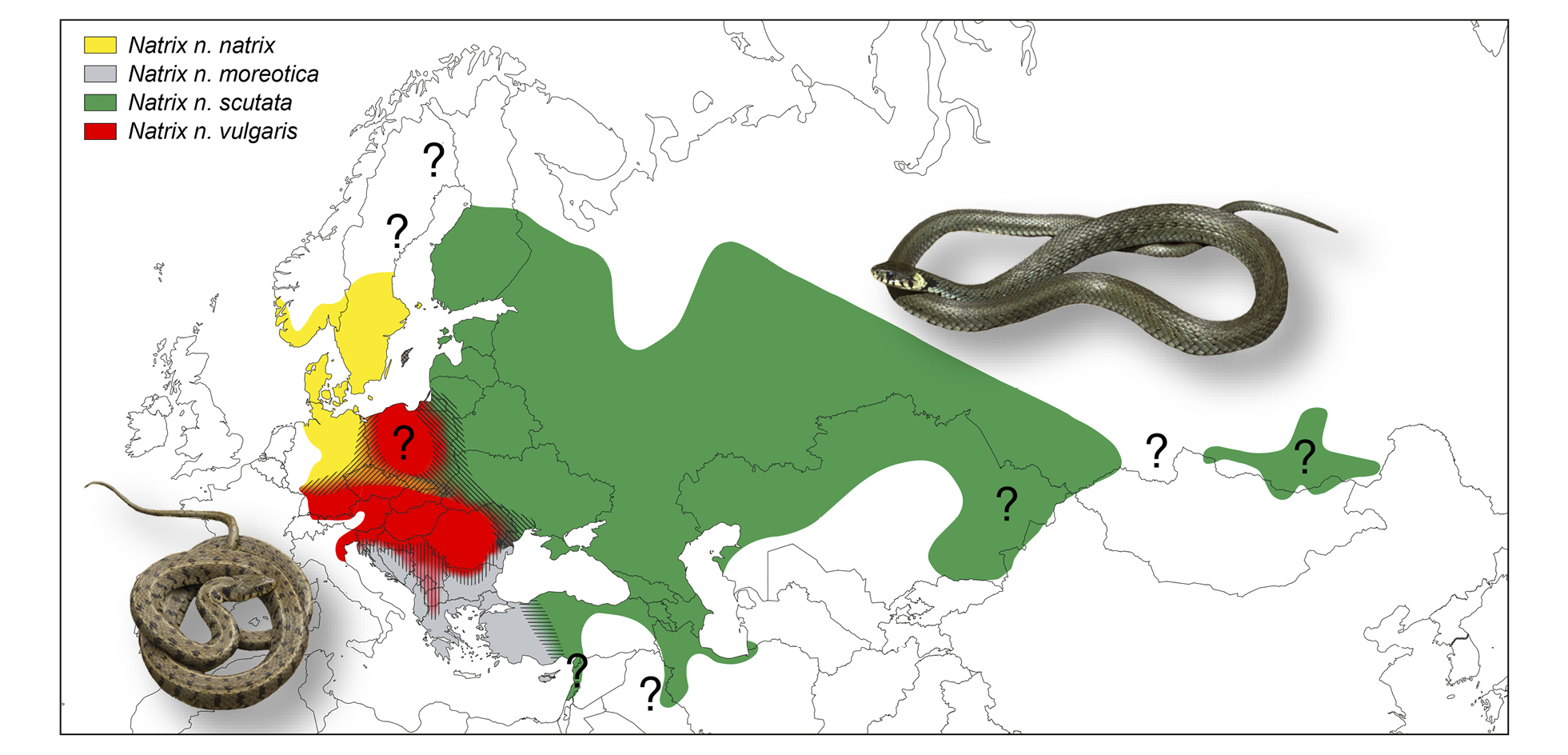
|
||
|
Approximate distribution of the subspecies of Natrix natrix as outlined in the present study, Fritz and Schmidtler (2020), and Asztalos et al. (2021a). Hatching indicates zones of secondary contact and admixture. Natrix natrix natrix (Linnaeus, 1758) largely matches mtDNA lineage 3 [non-Balkan haplotypes, see Discussion]; N. n. vulgaris Laurenti, 1768, mtDNA lineage 4; N. n. moreotica (Bedriaga, 1882), mtDNA lineages 3 [Balkan haplotypes, see Discussion], 5, and 7; and N. n. scutata (Pallas, 1771), mtDNA lineages 1, 2, and 8. Note that conflicting mitochondrial lineages occur in areas of mitonuclear discordance (e.g., many populations of N. n. vulgaris in southern Germany have haplotypes of mtDNA lineage 3). Question marks denote unclear taxonomic identity and/or unclear range borders. Map is based on records from Bannikov et al. (1977), Fog et al. (1997), Milto (2003), Grillitsch and Werner (2009), Kuranova et al. (2010), Afrasiab et al. (2011), Litvinchuk et al. (2013), Sindaco et al. (2013), GBIF (www.gbif.org), and iNaturalist (https://www.inaturalist.org), combined with our genetically verified records, following the approach described in Asztalos et al. (2020). Insets: Natrix natrix moreotica (bottom left; Peloponnese, Greece) and N. n. scutata (top right; Białowieża, easternmost Poland). Photos: Henrik Bringsøe. |